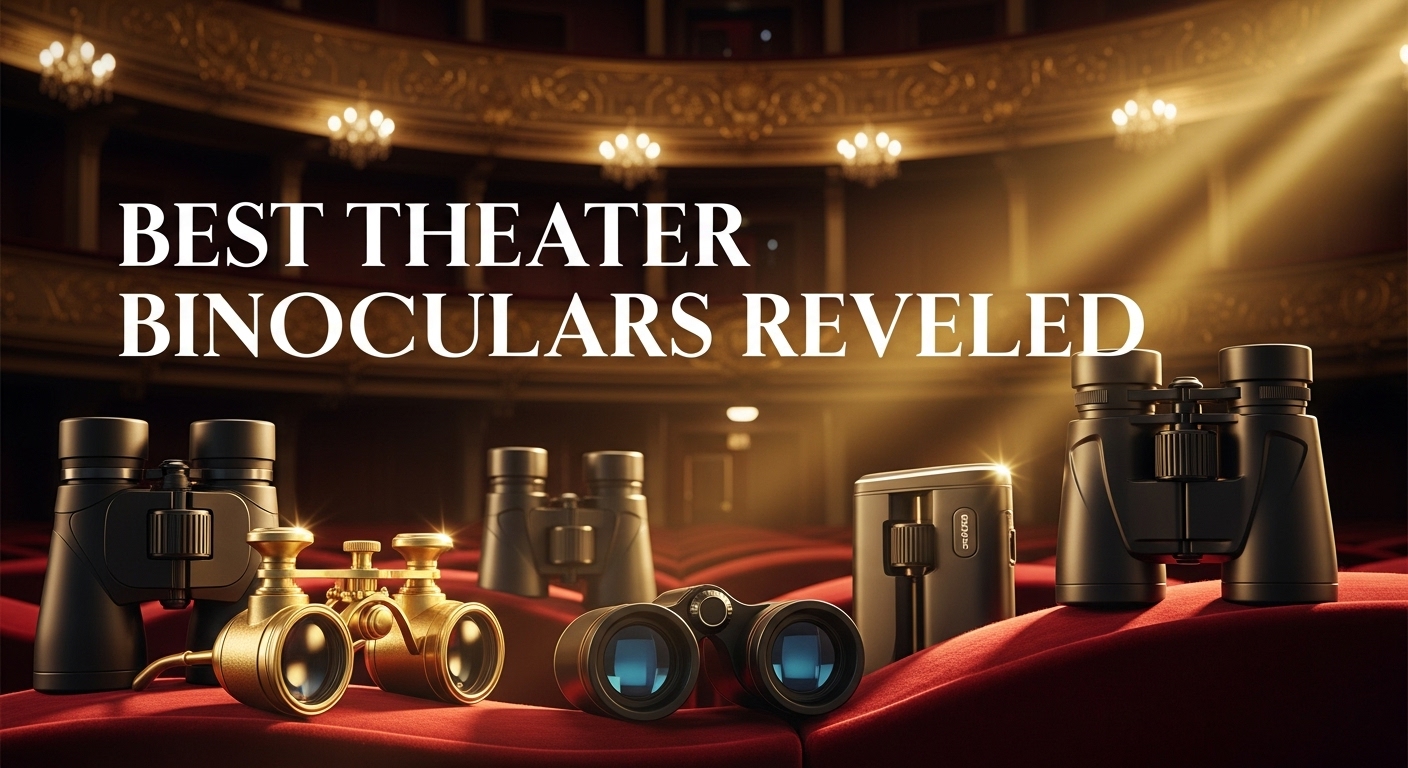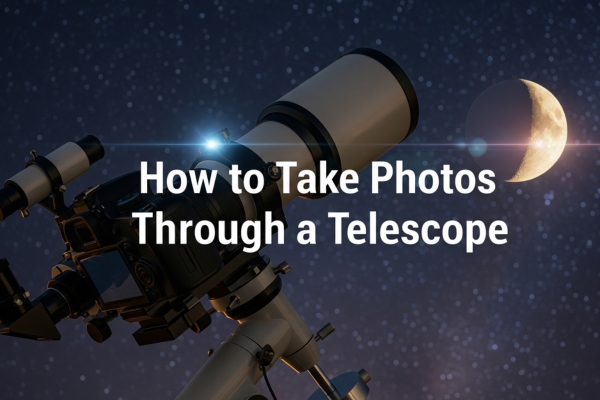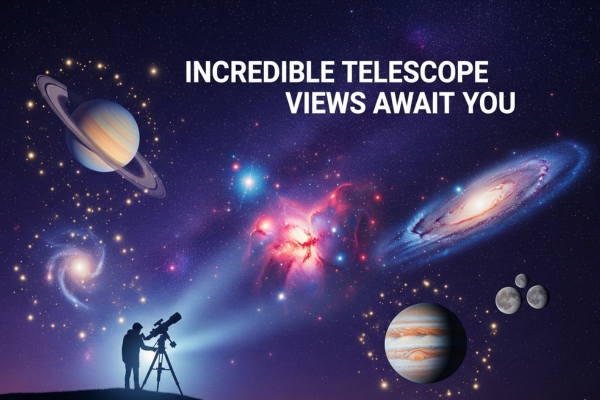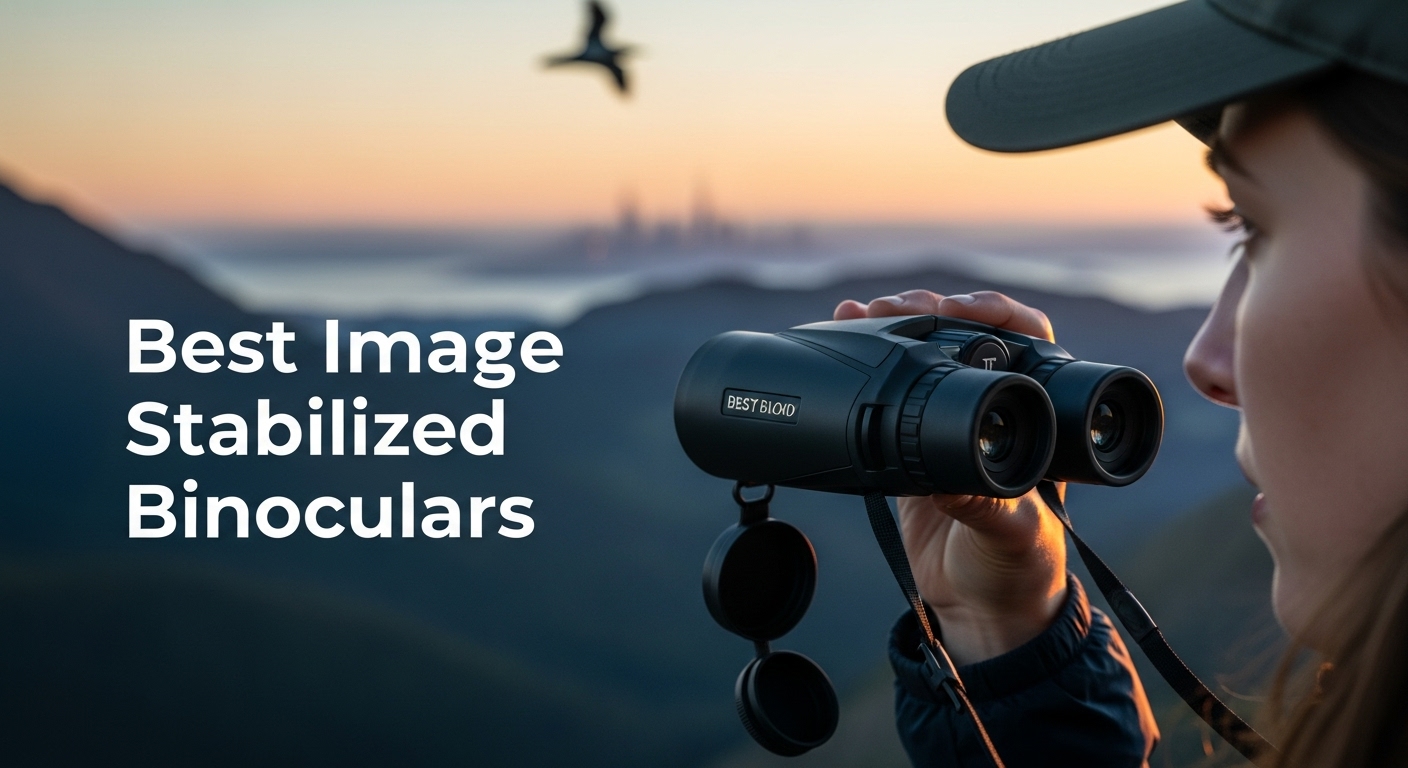

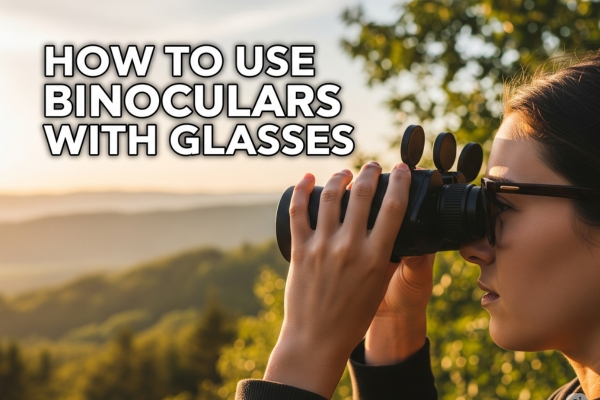

If you wear glasses and struggle with binoculars, you’re not alone. I’ve spent years helping people overcome the frustration of black rings, limited field of view, and uncomfortable viewing experiences. The good news? With proper technique and understanding, using binoculars with glasses becomes second nature.
After testing dozens of binocular models and consulting with optometrists, I’ve discovered that most problems stem from incorrect eyecup adjustment and misunderstanding eye relief. In this guide, I’ll walk you through everything from basic setup to advanced troubleshooting techniques that work for different vision conditions.
Whether you’re bird watching, attending sporting events, or stargazing, this comprehensive guide will help you achieve crystal-clear views without removing your glasses. We’ll cover the technical aspects in plain language, share optometrist-approved techniques, and address specific challenges like astigmatism and progressive lenses.
Eye relief is the distance between your eye and the binocular’s eyepiece lens where you can see the full field of view. For glasses wearers, this measurement becomes critical. Most people need at least 15mm of eye relief when wearing glasses, though 16-20mm provides more comfortable viewing.
Think of eye relief like the sweet spot for viewing. Too close, and you’ll see black vignetting around the edges. Too far, and you lose parts of the image. Your glasses typically add 10-12mm of distance between your eye and the eyepiece, which is why standard binoculars with 10mm eye relief won’t work properly with glasses.
I’ve found that many users don’t realize their viewing problems aren’t vision-related but distance-related. When testing binoculars, pay attention to the manufacturer’s stated eye relief. Models advertising “long eye relief” or “high eyepoint” design specifically accommodate glasses wearers.
The relationship between eye relief and field of view directly impacts your viewing experience. Insufficient eye relief causes kidney-shaped black shadows that block peripheral vision. This vignetting effect frustrates many glasses wearers who assume they need to remove their glasses, when actually they need binoculars with longer eye relief.
Different activities require different eye relief considerations. Bird watchers who track fast-moving subjects need generous eye relief to maintain full field of view while moving the binoculars. Astronomy enthusiasts can work with slightly less eye relief since they typically observe stationary objects. Understanding these nuances helps you choose appropriate equipment and adjust it correctly.
Start by fully extending or folding down the rubber eyecups. This crucial first step creates the proper distance for glasses wearers. Twist-up eyecups should be completely retracted, while fold-down models should lay flat against the binocular body. Many people skip this step and wonder why they can’t see properly.
Test the eyecup position by looking through the binoculars with your glasses on. You should see a complete circular view without dark edges. If you notice black crescents or kidney shapes, the eyecups need further adjustment. Some binoculars offer multiple eyecup positions – experiment to find your optimal setting.
Next, adjust the interpupillary distance (IPD) – the space between the two eyepieces. Hold the binoculars up to your eyes and slowly rotate the barrels together or apart until you see a single circular image instead of two overlapping circles. This distance varies between 54mm and 74mm for most adults.
The correct IPD setting feels natural and strain-free. If you experience eye fatigue or headaches after prolonged viewing, recheck this adjustment. Your IPD might differ slightly from your glasses’ pupillary distance measurement, so trust what feels comfortable rather than relying solely on numbers.
Most people have slightly different vision in each eye, which the diopter adjustment compensates for. Start by closing your right eye and focusing on a distant object using only the center focus wheel. Get the sharpest possible image for your left eye.
Now close your left eye and open your right. Without touching the center focus wheel, adjust the diopter ring (usually on the right eyepiece) until the image appears equally sharp. This personalized setting remains constant for your eyes, so note the position or mark it with tape.
Some premium binoculars feature locking diopter adjustments that prevent accidental changes. If yours doesn’t lock, check the setting periodically, especially if multiple people use the binoculars. A shifted diopter causes eye strain and reduces image quality.
With both eyes open, use the center focus wheel to achieve sharp focus on your subject. The image should appear three-dimensional with good depth perception. If you see double images or experience discomfort, revisit the IPD and diopter settings.
Practice focusing on objects at various distances to develop muscle memory. Quick, accurate focusing becomes especially important for wildlife observation or sports events where subjects move rapidly. Regular practice improves your speed and reduces missed opportunities.
Astigmatism creates unique challenges when using binoculars. The irregular cornea shape that causes blurred vision at all distances becomes more noticeable through magnification. I’ve worked with many people who thought their binoculars were defective when astigmatism was the actual culprit.
If you have significant astigmatism, keeping your glasses on is essential. The cylindrical correction in your lenses compensates for the irregular corneal shape. Removing glasses might seem to provide a wider view, but the resulting image blur negates any benefit. Ensure your binoculars have at least 17mm of eye relief to accommodate the extra distance.
Consider cleaning your glasses more frequently when using binoculars. Even minor smudges or dust particles become magnified and more distracting. I recommend keeping lens cleaning supplies in your binocular case for quick touch-ups during observation sessions.
Progressive lenses present special considerations for binocular use. The variable focal zones mean you must find the correct head position to look through the distance portion of your lenses. Tilting your head slightly back usually aligns the distance zone with the binocular eyepieces.
Some users with progressive lenses benefit from dedicated distance-only glasses for binocular use. While this means carrying extra glasses, the improved viewing experience often justifies the inconvenience. Single-vision lenses eliminate the need to maintain specific head positions and provide edge-to-edge clarity.
Bifocal wearers face similar challenges but with a distinct line separating vision zones. Position the binoculars so you look through the upper (distance) portion of your lenses. The visible line might occasionally intrude into your field of view, but proper positioning minimizes this distraction.
Strong prescriptions with thick lenses require extra attention to eye relief. The lens thickness adds even more distance between your eye and the eyepiece, potentially requiring 18-20mm of eye relief for comfortable viewing. Not all binoculars accommodate this requirement, so careful selection becomes crucial.
Edge distortion from thick lenses sometimes creates additional aberrations when combined with binocular optics. High-index lenses reduce thickness and weight while maintaining prescription strength, potentially improving your binocular viewing experience. Discuss this option with your optometrist if you frequently use optical equipment.
Bird watching demands quick focusing and wide field of view to track moving subjects. I set my binoculars for infinity focus before heading out, since most bird observations occur at distance. This pre-setting reduces adjustment time when spotting birds.
For following birds in flight, practice panning smoothly while maintaining focus. Start with slower-moving subjects like soaring hawks before attempting to track faster species. Keep both eyes open initially to locate the bird, then bring the binoculars to your eyes rather than searching through them.
Consider the travel telescope reviews for complementary equipment that offers higher magnification for stationary bird observation. Many birders combine binoculars for scanning and spotting scopes for detailed study.
Astronomical binocular use differs from daytime observation. Your pupils dilate in darkness, potentially changing the optimal eyecup position. What works perfectly during the day might cause vignetting at night. Test your setup under actual dark conditions before important viewing sessions.
The exit pupil (objective lens diameter divided by magnification) becomes critical for astronomy. Larger exit pupils gather more light but require precise eye positioning. Glasses wearers might struggle with binoculars having exit pupils larger than 5mm due to positioning constraints.
For extended astronomy sessions, consider binoculars with individual eyepiece focusing instead of center focus. This design maintains perfect focus on infinity without adjustment, ideal for celestial observation. Check our telescope buying guide for affordable alternatives that might better suit astronomical viewing with glasses.
Stadium and arena viewing presents unique challenges. Rapid action requires quick focusing, while varying distances from close plays to distant action demand constant adjustment. I recommend practicing focus wheel operation until it becomes instinctive.
Consider compact binoculars with good eye relief for events. Full-size binoculars might be cumbersome in crowded venues. Models around 8×25 or 10×25 with 15mm+ eye relief provide good magnification while remaining pocket-friendly.
Dr. Sarah Mitchell, an optometrist specializing in low vision, emphasizes proper cleaning technique: “Never dry-wipe your glasses before using binoculars. Microscopic debris acts like sandpaper, creating scratches that become magnified through optics. Always use proper lens solution and microfiber cloths.”
Frame selection impacts binocular use more than most people realize. Thick plastic frames might interfere with eyecup positioning, while thin metal frames allow closer eyepiece placement. If you’re choosing new glasses and frequently use binoculars, discuss frame options with your optician.
Anti-reflective coating on glasses reduces internal reflections when using binoculars, especially in bright conditions. However, some older coating formulations can create color fringing when combined with binocular optics. Modern multi-layer coatings typically don’t cause issues, but it’s worth testing before committing to expensive coating options.
Regular prescription updates ensure optimal binocular viewing. Even small prescription changes affect your ability to focus properly through binoculars. If you notice increased eye strain or difficulty achieving sharp focus, schedule an eye exam before blaming your binoculars.
Keep your glasses on if you have astigmatism exceeding 0.75 diopters, significant nearsightedness or farsightedness (over ±2.00 diopters), or progressive/bifocal lenses you’re accustomed to wearing constantly. The corrected vision quality outweighs any field of view limitations.
Consider removing glasses only if you have very mild prescriptions (under ±1.00 diopter), purely spherical corrections without astigmatism, or if your binoculars have insufficient eye relief despite proper adjustment. Always test both options to determine what works best for your specific vision needs.
Some situations benefit from alternating between glasses on and off. For example, scanning landscapes without glasses provides a wider field, then putting glasses on for detailed observation of specific subjects. This technique works only with mild prescriptions where uncorrected vision remains functional.
Aftermarket eyecup extensions can improve comfort for glasses wearers. These rubber or plastic accessories attach to existing eyecups, providing customizable eye relief adjustment. While not universally compatible, they offer solutions for binoculars with marginal eye relief.
Winged eyecups or eye guards help block peripheral light and maintain consistent eye position. Particularly useful for glasses wearers, these accessories reduce glare from side light entering between your glasses and the eyepieces. They’re especially beneficial for sunrise or sunset observation when sun angle creates challenging lighting.
When shopping for new binoculars, prioritize models with 16mm+ eye relief, adjustable twist-up eyecups with multiple positions, and wide eyepiece lenses that accommodate glasses frames. Test binoculars with your actual glasses before purchasing whenever possible.
Consider the trade-offs between magnification and ease of use. Higher magnification (12x or greater) amplifies hand shake and requires more precise eye positioning. For glasses wearers, 8x or 10x magnification often provides the best balance of power and usability.
Research specific models known for glasses-friendly design. Manufacturers like Nikon, Vortex, and Zeiss offer multiple models optimized for eyeglass wearers. Read reviews from other glasses wearers and look for consistent mentions of comfortable eye relief. Our rangefinder guide includes similar considerations for eyeglass compatibility in optical equipment.
Clean optics perform better and reduce eye strain. Develop a cleaning routine for both your glasses and binocular lenses. Use appropriate cleaning solutions and avoid household cleaners that might damage optical coatings. Compressed air removes debris before wiping, preventing scratches from dragged particles.
Store binoculars with eyecups in your preferred position to maintain consistency. Temperature changes can affect mechanical adjustments, so allow equipment to acclimate before use. Extreme temperature shifts might temporarily fog lenses – patience prevents damage from aggressive cleaning attempts.
Regular maintenance checks ensure continued performance. Verify that eyecups still adjust smoothly, the diopter setting remains accurate, and focus mechanisms operate properly. Address issues promptly before they worsen or affect your viewing experience.
Yes, if you have astigmatism, strong prescriptions (over ±2.00 diopters), or progressive lenses. Only consider removing glasses for very mild prescriptions without astigmatism, and always test both options to see what works best for your vision.
Most glasses wearers need 15-17mm of eye relief minimum, though 18-20mm provides more comfortable viewing. Thick lenses or large frames might require the longer end of this range.
Black circles or kidney-shaped shadows indicate insufficient eye relief or incorrect eyecup position. Ensure eyecups are fully retracted and your binoculars have adequate eye relief for glasses use.
Yes, but you need to find the correct head angle to look through the distance portion of your lenses. Some users prefer dedicated distance-only glasses for binocular use to avoid positioning issues.
Anti-fog treatments on glasses help, as does allowing equipment to reach ambient temperature before use. Avoid breathing directly on lenses and consider anti-fog wipes designed for optical equipment.
Yes, always adjust the diopter while wearing your glasses if you plan to use them during observation. This ensures the correction accounts for your glasses prescription.
Common causes include incorrect interpupillary distance, wrong diopter setting, insufficient eye relief, or outdated glasses prescription. Systematically check each adjustment to identify the issue.
Modern multi-layer AR coatings rarely cause issues. Older or damaged coatings might create color fringing or reflections. If you experience problems, try cleaning your glasses thoroughly or consulting your optician.
Using binoculars with glasses doesn’t have to be frustrating. With proper understanding of eye relief, correct adjustment techniques, and patience during setup, you can achieve the same viewing quality as non-glasses wearers. The key lies in choosing appropriate equipment and taking time to optimize adjustments for your specific vision needs.
Remember that every person’s vision is unique. What works perfectly for one glasses wearer might not suit another. Experiment with the techniques I’ve shared, document what works best for you, and don’t hesitate to try different approaches until you find your optimal setup.
Whether you’re observing wildlife, watching sports, or exploring the night sky, properly adjusted binoculars enhance these experiences immeasurably. Apply these techniques, maintain your equipment properly, and enjoy clear, comfortable viewing through your binoculars for years to come.


